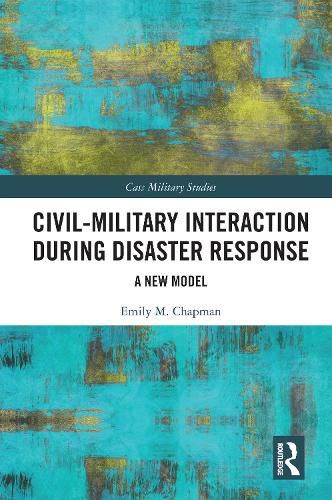Readings Newsletter
Become a Readings Member to make your shopping experience even easier.
Sign in or sign up for free!
You’re not far away from qualifying for FREE standard shipping within Australia
You’ve qualified for FREE standard shipping within Australia
The cart is loading…






This book presents a model to help enhance civil-military interaction in disaster response settings for the benefit of affected communities and the host nation.
Militaries are increasingly deploying to assist, or are present, in areas impacted by natural hazards. Drawing on the author's own operational experience and recent case studies of natural hazard responses, the book contributes a practical and accessible approach to civil-military interaction that enables actors to negotiate a relationship where there is shared purpose. It establishes a theoretical foundation for civil-military interaction, which is then used to describe effective interaction as a process of coordination that consists of sequential and necessary conditions that contribute to humanitarian outcomes and operational effectiveness. The book is novel because it includes the voices of affected communities and it syntheses factors that influence civil-military interaction across case studies to argue that, where context allows, civilian and military actors should focus on building a purposeful relationship that places affected communities and local leadership at the forefront of responses. Using this book, practitioners will be supported to establish relationships that contribute to their respective purposes, taking into consideration the consequences of their actions on others.
This book will be of much interest to students of civil-military relations, civil-military coordination, disaster responses, and International Relations in general.
$9.00 standard shipping within Australia
FREE standard shipping within Australia for orders over $100.00
Express & International shipping calculated at checkout
This book presents a model to help enhance civil-military interaction in disaster response settings for the benefit of affected communities and the host nation.
Militaries are increasingly deploying to assist, or are present, in areas impacted by natural hazards. Drawing on the author's own operational experience and recent case studies of natural hazard responses, the book contributes a practical and accessible approach to civil-military interaction that enables actors to negotiate a relationship where there is shared purpose. It establishes a theoretical foundation for civil-military interaction, which is then used to describe effective interaction as a process of coordination that consists of sequential and necessary conditions that contribute to humanitarian outcomes and operational effectiveness. The book is novel because it includes the voices of affected communities and it syntheses factors that influence civil-military interaction across case studies to argue that, where context allows, civilian and military actors should focus on building a purposeful relationship that places affected communities and local leadership at the forefront of responses. Using this book, practitioners will be supported to establish relationships that contribute to their respective purposes, taking into consideration the consequences of their actions on others.
This book will be of much interest to students of civil-military relations, civil-military coordination, disaster responses, and International Relations in general.